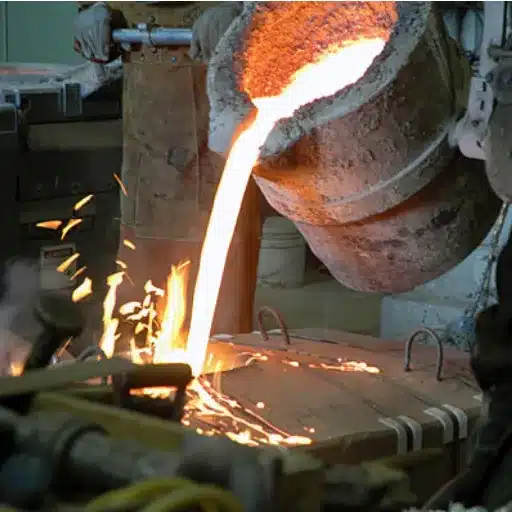Industrial valves are essential for many industries, acting as the hub of fluid control systems that check for precision, security, and dependability. Whether you are dealing with manufacturing, oil and gas, water treatment, or chemical processing, having a clear understanding of different types of industrial valves and their applications is needed to keep operational performance at peak. This step-by-step guide aims to simplify the intricate realm of industrial valves and explain their roles, types, materials used, and how to choose one best suited for your objectives. The provided information will put you in a position to make intelligent decisions regarding selection and application of valves so optimum precision, increased durability, and reliability of systems can be achieved. Prepare yourself to learn everything about these unparalleled mechanical devices.
What Are the Most Common Types of Industrial Valves?
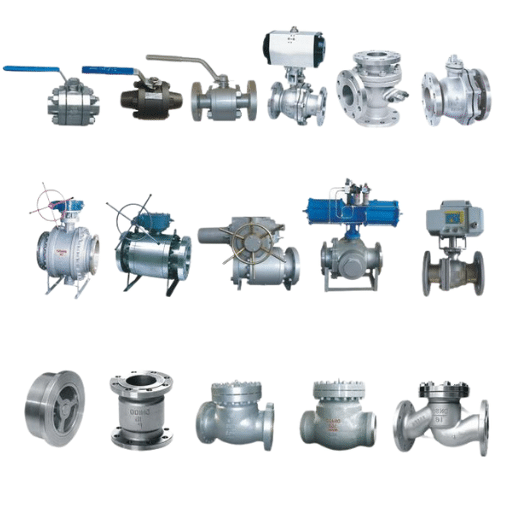
Based on their functions and designs, industrial valves nowadays have different types:
- Gate Valves – They operate by lifting or lowering a gate that allows flow, thus turning the valve on or off. This type of valve is mainly for on-off control.
- Ball Valves – These valves have a rotating ball with a hole in it to permit or block flow and are very dependable in shut-off situations.
- Globe Valves – They use a movable disk to slowly block or allow flow, which is best for accurately controlling flow.
- Check Valves – These valves are made to block backflow and safeguard systems by letting the flow pass in one direction only.
- Butterfly Valves – These types are thin and flexible that control flow through the rotating disk.
- Pressure Relief Valves – To ensure security and operational stability, systems are automatically relieved of surplus pressure.
Such categories are evenly valuable in different operations in industries.
Overview of Ball Valves, Gate Valves, and Globe Valves
Gate, ball, and globe valves are properly made valves that control the flow of fluids in the industry. These valves have the best solutions for different needs.
Ball Valves are useful because they can seal reliably and operate easily. They consist of a spherical disc with a hole through its center and permit flow when the disc is turned so that the hole is in line with the pipe. They are used in gas and liquid lines because they work well in high-pressure, high-temperature systems and offer tight shutoff. These valves are common with stainless steel and brass because they are durable, do not corrode easily and thus resist high-temperature attacks.
Gate Valves are very efficient when there is a need for full unobstructed flow. They work by lifting a rectangular or circular gate out of the path of the fluid, which keeps the pressure loss to a minimum. They are used in the systems that contain large amounts of fluid or in systems where the flow needs to be stopped completely or opened fully. Their construction allows them to withstand high pressure, but makes sailig throttling impractical due to disk erosion.
Globe Valves are meant for applications where flow control is paramount. A globe valve chamber contains a movable disk-type element, which helps throttle the flow of the fluid, and a stationary ring seat. Steam, water, and air systems are just a few examples of extreme applications where precision and throttling are necessary. Globe valves’ ability to endure harsh temperatures and extreme pressures makes them versatile in many industries.
A combination of material and design determines the valve’s functionality and makes it efficient for use in many different industries. The various kinds of these valves allow selection factoring in the rate of flow, pressure, and fluid, making them composite intelligent.
Control and Butterfly Valves: Their Functions and Differences
A control valve is a major piece of equipment in an industrial valve system as it serves to control the flow rate, pressure, and level of a fluid in a particular process. These valves are able to give required control by controlling the position of a flow controlling element, which could either be a plug or a ball, based on signals from automated control systems. A control valve is capable of providing a high degree of accuracy of control which makes them trackable even when the system undergoes significant change in operating conditions. For instance, modern control valves have flow coefficients (Cv) from single digits in miniature applications to over 300 in large industrial control installations. Different control needs may therefore be met with modern control valves. Construction materials for control valves and butterfly valves include alloys and stainless steel because such materials provide strength and resistance to corrosion.
Butterfly valves are optimally utilized for full-open, full-close, or throttling control operations to allow fluid movement as a result of the minimal cost these implements incur as well as their size. The basic construction consists of pair balancing discs for fluid flow regulating having a zero pressure differential across the valve which achieves minimum pressure loss. Butterfly valves can quickly actuate fully open or closed positions in contrast to other valves: full closure or opening can be reached in a quarter rotation. Such valves are very efficient in large-volume applications, such as distributing water, operating chemical plants, and generally, processes requiring high dependability and effectiveness. More advanced models withstand pressures above 250 PSI, and temperatures from -40°F to over 500°F.
Every type of valve has distinctive benefits and advantages, and in this case, it is the precision of the process, type of fluid used, and economical factors that influence the decision. Control valves are ideal for applications requiring a high degree of accuracy regulation. Butterfly valves are more practical in large flow capacity plants where price efficiency is critical.
Check Valves and Plug Valves: When to Use Them
Check valves are essential for one-way flow control, allowing backflow only under specific conditions and helping safeguard pumps and compressors. These automatic valves open if the upstream pressure is more than that downstream and close if the flow reverses. There are several types of check valves like swing check valves, ball check valves, and lift check valves attending to various industrial requirements. For instance, swing check valves are common in low velocity systems as they utilize a disc that swings freely to open and close the flow.
Unlike other types, Plug valves are very flexible because they can be quarter turned, resulting in a drop of pressure. They are extremely strong so they can withstand hgh pressure and high temperature, and even abrasive or corrosive fluids. These valves are highly reliable and use simple rotational motion with the plug to block the flow for processes needing frequent operation. They are compact and easy to maintain so plug valves can be found in Chemical processing, Oil and Gas, and Water Treatment industries.
In order to choose the correct type of valve, some critical aspects such as the pressure ratings, flow rate needs, the fluid characteristics, and the system architecture must be taken into account. For example, check valves are perfect for protecting devices against possible damage from flow reversal, whereas plug valves are the best for flow isolation and control. A proper understanding of these different elements will result in proper system optimization and for sustained operational performance.
How Do Different Industrial Valves Work?
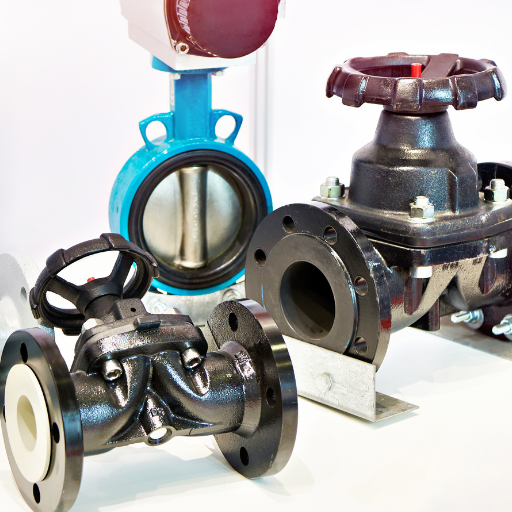
Industrial valves control fluid flow and pressure in a given system. They work by either fully or partially opening and closing channels to control movement. For example, gate valves are classified as on/off valves because they use sliding gates to cut flows in or out of pipes. Ball valves are more advanced in the sense that instead of sliding gates, they use a rotating ball with a hole (cylinder) in it which can be rotated to either align with the flow or block it. The construction of ball valves provides reliability and durability when a quick shut off is needed. For large volumes of fluid, controlling an incoming flow uses butterfly valves which employ a rotating disc. Each valve type is designed for specific tasks to be done in most precise and efficient way possible to the fluid control.
Quarter Turn Valves Vs Multi-Turn Valves: Operating Mechanisms
With quarter-turn valves, the actuator turns 90 degrees in either direction to facilitate quicker operation, and distinguishable positioning at ‘on’ and ‘off’ is afforded. This category includes ball valves, butterfly valves, and plug valves. Because of the uncomplicated mechanism construction, quarter-turn valves are popular in systems that require prompt reactions, such as emergencies, which need instant shutoff. For example, depending on the size, a typical ball valve can take less than a second to fully open or close, which is instant within most time-sensitive processes.
On the other hand, multi-turn valves are of the type with a screw stem which requires multiple turns to open or close the valve fully. These include gate and globe valves. Although their operation takes longer, this design allows for more accurate flow control which is critical for processes that require finer changes with time. Multi-turn valves are common in high pressure systems or applications requiring throttling control. Studies suggest that multi-turn valves accept greater pressure drops due to their sturdy construction, with many designs available that can surpass 1,500 PSI, which makes them useful for commercial and industrial applications.
In relationship to each other, the difference in selection is particularly based on the characteristics of the system’s operation, in terms of speed, operating pressure, and flow control accuracy. Each type has distinct advantages geared toward different operational needs.
Manage the System: Valve Bodies, Seats, and Other Parts
Flow control systems for use in different systems depends on the performance and reliability of valve bodies, seats, and components. Modern valve bodies’ noteworthy advanced features are made with utmost care to ensure its longevity. It is made out of materials such as carbon steel, stainless steel, or even special alloys which are capable of withstanding harsh environments. Thanks to innovations in vane body machining and casting, the precision of machines has increased. This means fewer cracks, defects, and other obstructions that would otherwise bring down the operational safety of a valve body.
The primary task of a seat is to provide a perfect fit to eliminate any leak and maintain an optimum level of efficiency. In the present era, many advanced seats use various polymers and PTFE (polytetrafluoroethylene). Depending on the elastomers and chemicals used, they are temperature-sensitive. The oil and gas industry greatly benefits from the use of polysulfone due to its extreme resistance against harsh corrosive chemicals and high-stress environments.
Optimum performance and lifespan of valves are achieved with careful engineering of stems, seals, and actuators. Gauges, which are self-contained devices, are also reactive. For example, high performance stems are fitted with surface treatments like nitriding to lessen wear for continuously operating valves. EPDM and fluorocarbon made seals resist pressure changes and withstand aggressive chemicals. Flow systems benefit from automation and precise control of fluids through pneumatic, electric, or hydraulic actuators which enhance management of fluid dynamics.
Mordern Industry reports indicate that new component manufacturing techniques enable longer periods between routine maintenance. Some designs are reported to reach over 250,000 cycles before any inspection or repair work is needed. This prolongs operational downtimes while delivering substantial cost reductions for industrial operators. Continually evolving materials designs highlight the need for the right bodies and components.
Open and Close: Valve Motion Types Explained
Valves have two types of motion: linear and rotary. Linear motion valves, like gate and globe valves, open and close by vertically moving the closure element. This makes them ideal for precise flow control or complete shutoff in high-pressure systems. Rotary motion valves, like ball and butterfly valves, turn in a circular direction to open and close the valve. They are fast acting and ideal for low-pressure and high-flow systems. Depending on media properties and system requirements, each motion type has unique affordances within and beyond operational parameters.
Which Industrial Valve Type Is Best for Specific Applications?
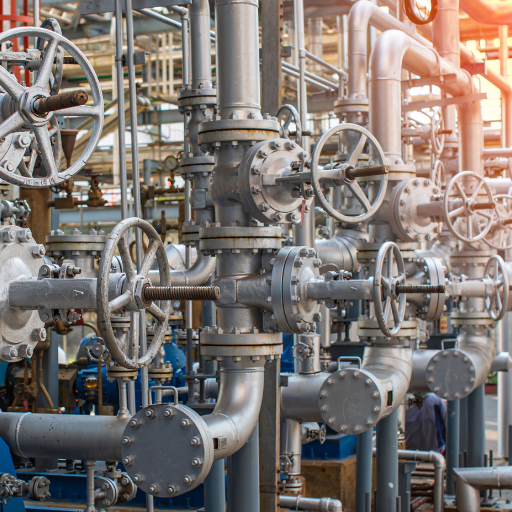
The most suitable industrial valve type varies depending on the application:
- Gate Valves are most suitable for applications that need a complete albeit unobstructed flow as in shutoff water distribution systems.
- Globe Valves are common in systems where precision flow regulation is needed because they deliver superior flow control.
- Ball valves are mostly used for liquid and gas applications since they need low pressure and quick shut off.
- Butterfly Valves, like in the HVAC field or water treatment, provide an economical option for low pressure systems with high flow.
- Check Valves are important in any pump systems as they avoid reverse flow.
Determining the type of valve requires analyzing its pressure, temperature, and flow rate, as well as its media compatibility.
Guidelines of Selecting an Appropriate Valve in an Industrial System
To select the desired valve for an industrial process, it is essential to understand the application’s scope and requirements such as pressure, temperature, flow rate, and media type. Assess the operational environment, adding potential exposure to corrosive substances, high temperatures, or abrasive materials. Also, consider the type of control required (manual, automatic, fail-safe) and how often the control cycle is performed. Without biasing standards, check the valve type controls and plant piping system. These elements confirm the appropriate selection of valves based on reliability, safety, and efficiency in line with the industry standards.
Applications of Valves in Water, Oil, Gas, and Chemical Industries
Vavles have a profound significance in all industries, but their uses in water, oil, gas, and chemical systems are of utmost importance owing to the direct impact they have on the design system.
Water Applications:
Gate, butterfly, and check valves are few of the most common valves used. Valves in water systems are often used to control the flow, pressure, and isolate a system. These valves are often required to compli, for example, NSF/ANSI 61, which is concerned with potable water. To avoid contamination, stainless steel or PVC which are corrosion resistant, are often used. Typical pressure ranges for water valves is between 150 to 300 PSI, depending upon the system requirements.
Oil Applications:
Ball, globe, and plug valves are some of the common valves used in an oil system. They are made for high pressures, temperatures, and even abrasive or corrosive materials. API 6D-compliant valves are used for the pipes transporting crude oil. In upstream and downstream operations, working pressures greater than 600 PSI and temperature ranges of up to 400°F are very common.
Applications with Gas:
Gas valves need tight shutoff capabilities to prevent leakage and ensure safety. High-pressure ball valves, needle valves, and pressure relief valves are popular options due to their effective sealing capabilities. Regarding natural gas pipelines, carbon steel and brass are special materials commonly used to endure high pressures that can exceed 1,000 PSI. In this industry, valves usually follow the guidelines of ASME B16.34 and ISO 7121.
Applications with Chemicals:
The requirements of the chemical industry are highly compatible and severely resistant valves. Aggressive fluids is managed using diaphragm valves and additionally using pinch valves and lined plug valves. Inert and structural integrity require materials such as PTFE, Hastelloy and titanium. Depending on the system, valves will also have to function with low temperatures and high pressure, bringing them to a range of 50 to 1500 PSI and -50F to 500F. Furthermore, it meets standards such as ANSI Class VI or API 598.
Maintaining designated valves for each application helps the facilities ensure safety and seamless operations, comply with regulatory requirements, and operate efficiently.
Impact of Valve Size and End Connections on Performance
For any fluid system, the performance is affected directly by valve size and end connections about flow efficiency, pressure drop, and system reliability. An optimal valve size selection guarantees proper flow control, reducing turbulence, and mitigating cavitation while achieving maximum efficiency. For example, creating an energy-inefficient system by having an oversized valve leads to increased pressure drops and energy within system components. On the other hand, lack of flow regulation and increased material usage as operational costs occur while having an oversized valve.
End connections like threaded, flanged, or welded determine the system’s strength to pressure and temperature variables. For instance, flanged connections tend to bear stress while aiding in easy disassembly for maintenance procedures for higher strength suited areas. Unlike flanged connections, threaded connections are prone to higher pressure applications, around 2000 PSI but provide less leak resistance than welded and flanged offers in extreme heating conditions.
Research has shown that an appropriate size and strong end fittings can enhance operational efficiency by twenty-five percent in industrial fluid systems while decreasing potential leakages. This highlights the need to consider a valve’s size and type of connections with the system’s working conditions, such as flow, pressure, and temperature, for the system to be robust and long-lasting.
What Factors Should I Consider When Selecting Industrial Valves?
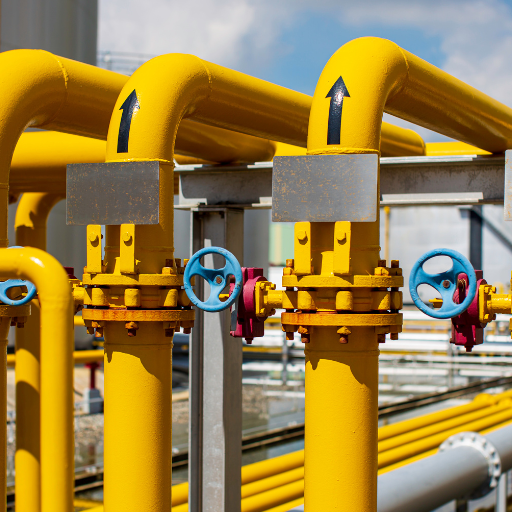
While choosing industrial valves, keep in mind the following points:
- Material Compatibility: Confirm that the valve material would not corrode, degrade, or contaminate the system’s fluid.
- Pressure and Temperature Ratings: Make sure the valve can take the pressure and temperature of your system.
- Flow Requirements: Choose a valve that meets your application’s flow ratio and control requirements.
- Type of Valve: Select a valve using ball, gate, or check valves based on the tasks that need to be executed, such as on/off control and flow regulation.
- Operating Environment: Consider how humidity, exposure to chemicals, or extreme temperatures can impact the valve’s performance.
Addressing these criteria helps ensure the valve operates effectively, safeguarding system integrity and longevity in operational performance.
Pressure Compatibility, Temperature and Media Compatibility
As a pressure, temperature, and media relate to one another, they all pose a relationship that is crucial to the effectiveness and the maximum lifetime of valve systems. Each valve has a certain limit, which is the maximum operating pressure, and is referred to as pressure class or rating, for example, ANSI Class 150 or 300. Valves on the higher levels of Class 300 ANSI often receive CAPPS marks, which increase to 740 psi when the 100°F mark is passed. Heated 100 degree form, but varies with different material components.
The temperature value must not exceed the boundary limits of the Components of a valve, namely the body material and its seals. Most people living in steel countries face relatively higher ranges of metals, which start from -320 degrees Form to 1500 degrees form. Cap seals made of elastomer form usually set the border of operation at quite a low temperature of -60 form to 450 forms.
Media compatibility means the appropriateness of a valve structure about the specific fluid or gas it controls in a system. Valves made of resistant materials, such as Hastelloy or PTFE-lined components, are necessary for more aggressive substances like acids or alkalis. On the other hand, non-corrosive fluids can easily be managed with standard materials like carbon steel or brass without negatively affecting performance. Proper media compatibility enables the optimal function of corrosion resistant materials while also minimizing maintenance procedures, therefore avoiding early material and system failure.
Manual vs. Automated Control of a Valve
Manual valve operation means exercising valve control through levers, handwheels, or gears. It is straightforward, inexpensive, and works for devices that are seldom used or lack electrical power. On the contrary, automated control of a valve uses an actuator powered by electricity, pneumatic pressure, or even hydraulics. This enables precise micromanagement or macromanagement of controls, therefore fitting complex systems. Using these depends on demand for precision, operational needs, and available funds.
How Are Industrial Valves Installed and Maintained?
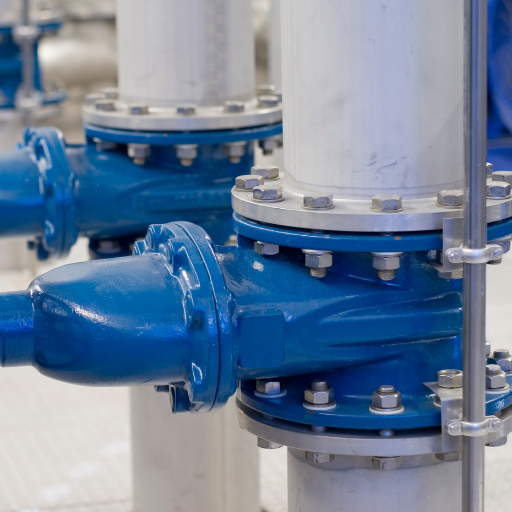
Industrial valves’ effective use and longevity depend on their proper installation and upkeep practices. Prior to installation, valves should be checked for damage and installed in accordance with flow direction indicators. Correct positioning concerning the pipeline minimizes strain on the valve body and the adjacent piping. To avoid leaks, bolts and fittings must be properly tightened.
Maintenance practices include conducting periodic inspections to check for wear and tear, corrosion, or performance-affecting buildup. Other than cleaning and lubricating the moving parts, replacing worn-out seals or gaskets is also common. Testing the functionality of actuators on actuated valves may also be required from time to time. Adhering to the strict guidelines set by the manufacturer and a preventive maintenance schedule optimizes performance and increases the valve’s lifespan.
How to Install Different Types of Valves
In the case of gate valves, the installation procedure for sealing edges leads to the valve being fully closed. The pipeline should also match the valve body to ensure no stress is placed on the connections, and flow direction needs to be checked for compliance with the valve body’s arrow.
Using gaskets that match the industry standards also prevents chances of leakage.
When installing ball valves, ensure that the handle or actuator is mounted in a position that is reachable for operation. Also, ensure that the valve is adequately supported to minimize the strain from the flange connections or threaded joints. Do not overtighten any bolts; rather, ensure that all the bolts are evenly tightened in a cross pattern to achieve the standard seal.
For butterfly valves, care should be taken to ensure that the valve is aligned with the pipeline or with the disc in the right position if it is rotating. Check that there is sufficient room around the valve so that the disc rotation will not be impeded, and check that the flange type is compatible with the valve configuration for effective sealing.
Check valves may be installed without caution if the flow coincides with the arrow on the valve body. Do not maintain pipeline conditions because set debris will not affect the mechanism. Sufficient space around the edges leads to obstructed movement of the internal parts.
Maintenance Checklists and Usual Issues with Valves
To avoid any issues with valves, I handle the disc movement area carefully and use appropriate flange types for proper sealing. I do not change the pre-set order of opening and closing the valve indicated by the arrow on the body and do not suspend cleaning the pipeline’s interior surfaces. Furthermore, I do not hinder the movement of the valve’s parts by covering the proper gaps.
Reducing the Rate of Wear of the Valves in Industrial Settings
For valves exposed to harsh industrial conditions, I use an array of thorough maintenance techniques, such as regular inspections, cleaning, lubrication, and looking for any signs of wear or damage. I make sure valves are installed following the direction on the arrow and do not move them beyond their designed pressure and temperature ranges. I do not over-tighten the device during use and fix even small leaks right away. That helps limit degradation. Keeping the area clear of corrosive substances also prevents surrounding surfaces from getting damaged.
What Are the Latest Innovations in Industrial Valve Technology?
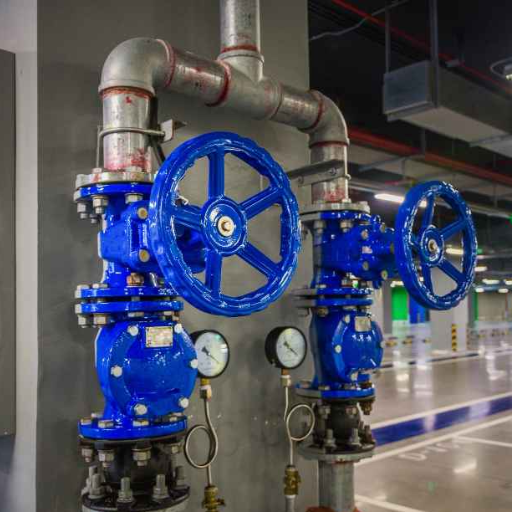
Developments in industrial valve technologies concentrate primarily on enhancing performance, efficiency, and reliability for operations. Predictive maintenance and real-time monitoring are now possible with Smart valves installed with IoT sensors, leading to reduced downtime, higher system efficiency, and improved cytstem productivity. Pervasive IoT devices equipped with smart valves enable the remote operation and monitoring of valves. With advanced materials like corrosion-resistant alloys and composite polymers, extremem condition performance has been improved alongside other auxiliary factors like valve lifespan. Additionally, electric and pneumatic automating actuators are enhancing the degree of control over operations, broadening their applicability while increasing safety.
Integrating Smart Valves and the IoT
The smart valve IoT integration is more than likely a game-changer for the industry offering improved optimization and impressive capabilites in terms of data analysis and prediction. Smart Valves of today are developed within an IoT ecosystem, hence, having advanced sensors designed to capture and process all relevant parameters, like pressure, flow rate, and temperature, in real-time. Present-day cloud technologies allows data to be processed at the edge or center, hence all measurements collected from smart valves can be sent to a cloud center where machine learning algorithms facilitates failure forecasting.
As per the latest insights from the industry, the smart valve global market is expected to grow significantly in the coming years, with an estimated CAGR of around 10% over the next 10 years. This growth is attributed to the greater need for automated systems in areas such as oil and gas, manufacturing, and wastewater treatment. With IoT, valves can be operated autonomously and remotely and assessed in real-time, leading to reduced manual work and operational risks.
Another noteworthy advantage of smart valves regulated by IoT is energy efficiency. Smart valves dynamically adjust to changing system conditions, reducing energy expenditure by as much as 20%. Additionally, IoT provides critical infrastructure with instantaneous alerts when operational issues occur, enabling prompt maintenance work to prevent costly downtimes. The use of smart IoT valves is expected to increase to accomplish optimization and resilience in industrial processes.
Sustainable Valve Design with Energy Efficiency in Mind
Incorporated in energy-efficient designs for valves is the reduction of fluid resistance and leakage, two major energy-wasting processes for industrial systems. These sophisticated designs are often made using new materials like composite polymers and alloys that provide the required strength and durability. Sustainable valves incorporate low-emission seals to control emissions and protect the environment while complying with legal requirements. These valves enable industries to cut costs by enhancing efficiency throughout the services and systems while also achieving sustainability goals during the industrial processes.
Reference sources
1. Study Title: “Advancements in Industrial Valve Technologies for Enhanced Operational Efficiency” (2020)
Source: Journal of Industrial Engineering and Innovation
Key Findings and Methodologies: This paper explores the role of smart valve technologies in modern industrial systems, emphasizing the integration of Internet of Things (IoT) sensors for predictive maintenance. The authors utilized computational simulations and field data to compare traditional versus smart valves, concluding that smart valves reduced downtime by 25% and improved overall system performance. The study also highlights material innovations, such as corrosion-resistant alloys, that extend valve lifecycle in harsh environments.
2. Study Title: “Performance Analysis of High-Pressure Valves in Energy Systems” (2021)
Source: Energy Systems and Applications Journal
Key Findings and Methodologies: Researchers conducted experimental tests on high-pressure valves used in power plants to evaluate sealing efficiency and material fatigue. The study provided detailed data on the operational limits of different valve designs and proposed enhancements to withstand extreme conditions. The findings underscored the importance of adopting advanced sealing mechanisms, resulting in a 15% increase in energy efficiency across tested models.
3. Study Title: “Environmental Impact Assessment of Low-Emission Industrial Valves” (2022)
Source: Sustainable Manufacturing and Environmental Engineering
Key Findings and Methodologies: This paper analyzed the environmental benefits of low-emission valve technologies developed over the past decade. Using lifecycle assessment (LCA) techniques, the authors detailed how emissions from industrial systems were reduced by implementing valves with advanced sealing and leakage prevention technologies. The research demonstrated a 30% decrease in greenhouse gas emissions compared to conventional valves, aligning with global sustainability goals.
Frequently Asked Questions (FAQs)
Q: What are the different types of valves used in industrial applications?
A: There are several different types of valves used in industrial settings, each designed for specific applications. The most common include ball valves, which provide quick shut-off capability; gate valves for on/off control with minimal flow restriction; globe valves for precise flow regulation; butterfly valves for large diameter applications; check valves that prevent backflow; diaphragm valves for handling slurries; pinch valves for abrasive materials; and control valves for automated systems. Each valve type has unique characteristics that make it suitable for particular industrial processes, pressure ratings, and fluid types. Valve manufacturers continually improve designs to enhance performance, durability, and specialized functionality.
Q: How do I know which type of valve to use for my specific application?
A: Selecting the right type of valve depends on several factors. First, consider your process requirements: temperature range, pressure conditions, and the medium flowing through the valve (liquid, gas, slurry). Second, evaluate the function needed—whether you need to simply open the valve and close the valve completely (shut-off valve) or regulate flow precisely. Third, consider installation constraints including space limitations, valve end connections (threaded, flanged, welded), and maintenance accessibility. Finally, factor in economic considerations like initial cost, maintenance requirements, and expected service life. For critical applications, consulting with a reputable valve manufacturer or fluid handling specialist is recommended to ensure optimal selection.
Q: What is a quarter-turn valve and when is this type of valve used?
A: A quarter-turn valve is a type of valve that requires only a 90-degree rotation (quarter turn) of the valve handle to completely open the valve or close the valve. The most common types in this category are ball valves and butterfly valves. Ball valves contain a spherical disc that rotates to control flow through the valve, while butterfly valves use a disc that rotates on a central axis. Quarter-turn valves are commonly used in applications requiring quick operation, minimal pressure drop, and reliable sealing. They’re ideal for on/off service rather than flow regulation and are widely used in industrial settings for water, oil, gas, and chemical processing. Their popularity stems from their simple operation, durability, and reliable shut-off capabilities.
Q: How do control valves differ from manual valves?
A: Control valves are automated valves that regulate process conditions such as flow, pressure, temperature, or liquid level by responding to signals from a control system. Unlike manual valves that require physical human intervention to open the valve or close it, control valves can be operated remotely through electric, pneumatic, or hydraulic actuators. Control valves are used extensively in process industries where precise, continuous adjustment is necessary. They typically include positioners, which ensure the valve moves to the exact position needed based on the control signal. While manual valves are simpler and less expensive initially, control valves offer advantages in consistency, precision, remote operation capability, and integration with automated systems, making them essential in modern industrial processes.
Q: What are the most common valve end connections and how do they affect installation?
A: Valve end connections determine how a valve connects to piping systems and significantly impact installation procedures. The most common valve end types include: Threaded ends (NPT or BSP), which are easy to install but may have limitations at higher pressures; Flanged ends, which use bolted connections with gaskets for reliable sealing at higher pressures; Welded ends (socket weld or butt weld), providing permanent, leak-proof connections; Wafer or lug designs, which fit between pipe flanges; and Compression or clamp fittings for specialized applications. The choice of valve end depends on system pressure, temperature, need for disassembly, industry standards, and installation environment. Proper matching of valve ends to your piping system is crucial for preventing leaks and ensuring system integrity.
Q: How do globe valves function and where are they typically used?
A: Globe valves operate using a linear motion valve mechanism where a movable plug or disc is positioned against a stationary ring seat. When the valve handle is turned, the stem moves the disc perpendicular to the seat, controlling the flow through the valve. Unlike quarter-turn valves, globe valves typically require multiple turns to fully open or close. Globe valves are used in applications requiring precise flow regulation, frequent operation, and throttling capabilities. They’re excellent for controlling flow rate but create more flow resistance than gate valves. Globe valves are commonly used in steam systems, feedwater lines, cooling water systems, and where precise flow control is essential. Their design allows for reliable shut-off and they handle high-pressure drops well, though they do create more pressure loss than similar to gate valves when fully open.
Q: What is a pressure reducing valve and why is it important?
A: A pressure reducing valve is a specialized control valve that automatically reduces a higher inlet pressure to a lower, regulated outlet pressure regardless of fluctuations in the supply pressure or flow demand. This type of valve is used to control system pressures to protect downstream equipment, prevent pipe damage, reduce water hammer effects, and ensure consistent operation of process equipment. Pressure reducing valves are critical in municipal water systems, industrial processes, steam systems, and anywhere precise pressure control is needed. They function by using a diaphragm, spring mechanism, and pilot controls to sense downstream pressure and adjust the valve position automatically. These valves help maintain safe operating conditions, reduce water waste, prevent equipment damage, and can significantly extend the life of piping systems and connected devices.
Q: How do I properly maintain industrial valves to ensure long service life?
A: Proper valve maintenance begins with regular inspection schedules to check for leaks, corrosion, or damage to external components. For manual valves, periodically cycle the valve (open the valve fully and close the valve) to prevent seizure and verify operation. Lubrication is essential for moving parts—follow manufacturer recommendations for lubrication intervals and products. The packing or seals inside the valve often require adjustment or replacement to prevent leakage around stems. Clean valves routinely to remove buildup that could affect performance. Create and follow a preventive maintenance program based on the valve manufacturer’s guidelines, operating conditions, and criticality of the valve. For control valves, include calibration checks and actuator maintenance. Document all maintenance activities and valve performance to track degradation over time. Properly maintained valves perform their functions more reliably and have significantly longer service lives.

